If you run a B2B service company, you probably do not have time to babysit ads or parse a wall of acronyms. I want lower customer acquisition costs, a cleaner pipeline, and proof that ad spend pulls its weight. That is where geotargeting shines. By focusing budget on locations that actually produce high-value deals, I cut waste and get more at-bats with the right buyers. Simple idea, big payoff.
Why geotargeting is important
Outcomes matter. Geotargeting trims CAC by concentrating media in regions where I already close well, improves lead quality by filtering for markets that match my ICP, and speeds time-to-value by prioritizing metros where decisions happen faster. It also supports market expansion without guesswork. Instead of blanketing the map, I start where win rates, partner density, or service delivery coverage already line up.
A few quick use cases I keep in mind:
- IT services: I focus search and LinkedIn ads on metros with dense corporate HQs and data-center clusters, and exclude regions with low fiber coverage or long on-site travel times. Outcome: higher SQL rate and fewer ops headaches.
- Management consulting: I target cities hosting industry conferences this quarter, plus a 5 to 10 mile radius around venue hotels during show dates, and add local proof points in ad copy. Outcome: faster meeting volume and warmer follow-ups.
- Logistics and 3PL: I concentrate spend in corridors with ports, intermodal hubs, and free-trade zones, and tighten radii around facilities I can support within SLA. Outcome: better lead fit and happier ops.
It can look like I am shrinking reach too much. In practice, I gain back what I might lose in volume by lifting conversion rates and pushing down cost per qualified lead. The goal is a heatmap in which bright spots match high-LTV regions.
What is geo-targeted advertising
Geotargeted advertising means serving ads and content based on a person’s physical location. The data comes from a few common sources:
- IP address: useful for country and region, reasonable for metro. Often around 95 percent accurate at country level and about 50 to 80 percent at city level, depending on provider, VPNs, and network setup. Many platforms rely on IP address geolocation data to power this.
- GPS: highly precise on mobile when consented, often within a few meters in open areas.
- Wi-Fi and device signals: triangulation yields solid city or venue-level targeting when GPS is weak, like indoors.
Geotargeting vs geofencing: geotargeting selects people in a defined geography such as cities, zip codes, or a radius. Geofencing sets a virtual boundary and triggers an action when someone enters or exits that area. For B2B, geotargeting does the heavy lifting for awareness and lead gen. Geofencing is handy for events, retail-adjacent services, or post-view footfall studies.
Pros I care about in B2B:
- Puts my message in front of high-density decision-maker markets.
- Filters out long-distance or out-of-coverage leads that burn time.
- Supports regional offers, pricing, or service menus.
Cons I weigh:
- Smaller TAM means I must pair location with firmographics or behaviors to keep scale.
- Longer sales cycles blur attribution, so CRM location fields and geo-based UTMs are essential to close the loop.
- City-level IP accuracy varies; I avoid promising hyperlocal precision from desktop alone.
Types of geotargeting
I shape geotargeting at different levels and use these building blocks with intent, not habit.
- Country: Good for market entry or English-speaking countries where service terms and compliance fit. Precision is broad. Example: run demand campaigns in the US, Canada, UK, and Australia while segmenting bids by country-level CPL. Pitfall: lumping all countries into one budget hides performance swings.
- Region or state: Useful for compliance niches and state-regulated services. Precision is medium. Example: focus on states with clean procurement pathways for public sector IT. Pitfall: ignoring border-city bleed where users work in one state and live in another.
- City or metro: Ideal for HQ clusters and talent hubs. Precision is higher, and copy can feel local. Example: target the Bay Area, Austin, and Seattle for cloud engineering services with city-named ad variants. Pitfall: over-broad metros inflate frequency in distant suburbs that do not buy the service.
- Radius: Perfect for events, conferences, service areas, or near partner offices. Precision is highest but requires care. Example: a 3-mile radius around a trade show venue during show hours, plus a 1-mile evening radius around the main hotel block. Pitfall: overlapping radii that double frequency and skew lift tests.
Strategy: platforms, parameters, and creative that reflect presence
Here is a simple workflow that keeps execution tight and measurable.
-
Choose channels that match intent and reach
- Search: high-intent queries by location. Adding Microsoft Ads can extend reach in certain industries. If you are newer to PPC (pay-per-click) economics, level-set first.
- Social: LinkedIn for senior decision-makers and ABM. Meta for reach and retargeting in defined metros. X and Reddit for niche communities if buyers congregate there.
- Programmatic: helpful for scale, layered audience data, and geofencing. I set inventory controls, brand safety, and firmographic overlays where available.
-
Set location parameters that reflect reality
- Start with 3 to 5 priority metros where sales coverage and delivery are strongest. Include and exclude locations with purpose.
- Presence vs interest-based targeting: on major platforms, select “people in or regularly in” locations, not “interested in.” Add negative locations that historically drain budget.
- Align time zones and dayparting to local business hours. If global, I create time-zone-specific ad sets rather than one flat schedule.
-
Create localized variants without forcing it
- Use city names and recognizable landmarks sparingly but meaningfully.
- Show local proof like client locations or region-specific case studies.
- Match currency, tax, and office hours. If discovery calls run early mornings local time, say so.
- Keep landing pages geo-specific; avoid one generic page with a pasted city name. Learn More
-
Layer ABM and firmographics for precision
- Pair geotargeting with industry, company size, and function where platforms allow. On search and programmatic, I use lists and data partners that map companies to likely device or cookie clusters.
- Split segments such as Enterprise 1000+ in target metros vs Mid-market 200 to 999, and adjust bids and messaging by tier.
-
Track what actually proves impact
- Use geo-specific UTMs and ensure CRM captures City, State, and Country. Pipe these fields to dashboards so pipeline per metro is visible.
- Adjust budgets and bids regionally. I shift spend weekly based on CPL, MQL-to-SQL rate, and pipeline per city to optimize your campaigns.
- Run incrementality tests: I hold out one similar city as a control for four weeks and compare pipeline lift, not just clicks.
Before launch, I verify location accuracy ranges by level (country, city), coverage in the target regions, alignment with B2B filters (industry, company size), and consent handling for mobile signals. Reporting must break down performance by city or zip to enable real optimization.
Execution and optimization that hold up over time
I start focused: three to five high-potential metros with modest daily budgets. I review every three to five days, not every three hours; the signal I care about is qualified pipeline, which lags top-of-funnel metrics.
Practical tactics that keep teams honest:
- Cap frequency to avoid showing the same ad ten times a day in smaller metros. Fatigue hides in plain sight.
- Exclude poor-performing regions quickly. If a city burns budget and shows weak MQL-to-SQL conversion for two weeks, I pause it and reassign spend.
- Align with sales coverage and SLAs. If I cannot service on-site needs within 48 hours in a region, I do not run ads there yet.
- Audit “presence vs interest” settings monthly. Platforms change defaults.
- Standardize geo-specific UTM structures (for example, utm_campaign=search_brand_sf). Consistency makes reporting easier.
- Ensure CRM captures location and attribution. I add required City and State fields on forms and backfill via enrichment when missing.
- Rotate city-level holdout tests to measure incrementality without starving one market indefinitely.
I also bid up in metros with stronger close rates (not just cheaper clicks), use local landing pages that map to service menus by region, and set negative locations outside SLA.
Ethical considerations
Privacy and fairness are not afterthoughts; they are table stakes.
- Privacy and consent: I document what location data I use, why I use it, and how users can Opt Out. For mobile GPS, I rely on consented signals.
- IP limits: desktop IP is better for country and region, weaker for specific neighborhoods. I do not promise down-to-the-block precision.
- Avoid discriminatory targeting: I never try to infer or exclude by protected classes. I use geography to match service availability and support hours, not to gate equity.
- CCPA and GDPR: I honor regional laws, maintain a data map and retention policy, and provide clear notices where required. Legal review comes before launch. See a Trust Center example for transparent practices.
- Platform policies: I follow rules on restricted categories, employment ads, and sensitive attributes.
Do
- Use geotargeting to improve relevance, service coverage, and user experience.
- Document data sources and retention.
- Audit exclusions quarterly.
Do not
- Micro-target in ways that could proxy for protected attributes.
- Reuse location data for purposes not disclosed.
- Share raw location data without proper agreements.
Measuring ROI by location
Return is not one number. It is a set of ratios that tells a story by location. I keep a simple framework. If you need a refresher on marketing ROI definitions and formulas, review them up front.
Core metrics by location:
- CPL and cost per MQL
- MQL-to-SQL conversion rate
- Pipeline per metro
- Close rate and revenue per metro
- CAC by region and LTV by region
- Incremental lift vs control geos
- Payback period in months
Formulas
- CAC by region = total marketing and sales costs attributed to that region ÷ number of new customers from that region.
- Payback period (months) = CAC by region ÷ gross margin per month from that region’s average customer.
- Incremental lift = (pipeline in test geos − pipeline in control geos) ÷ pipeline in control geos.
Worked example (assume a 12-month contract; gross margin 60%)
Spend: 30,000 total, split evenly across Metro A, B, and C.
- Metro A: 10,000 spend yields 80 MQLs, 24 SQLs, 6 deals. Avg deal value 35,000 (first-year revenue). Revenue = 210,000. Add a fair share of sales effort, say 5,000 per metro, so CAC = (10,000 + 5,000) ÷ 6 = 2,500. Monthly gross margin per deal = (35,000 × 0.6) ÷ 12 = 1,750. Payback = 2,500 ÷ 1,750 ≈ 1.4 months.
- Metro B: 10,000 spend yields 60 MQLs, 12 SQLs, 2 deals. Avg deal value 40,000. Revenue = 80,000. CAC = 15,000 ÷ 2 = 7,500. Monthly gross margin = (40,000 × 0.6) ÷ 12 ≈ 2,000. Payback ≈ 3.8 months.
- Metro C: 10,000 spend yields 70 MQLs, 14 SQLs, 3 deals. Avg deal value 30,000. Revenue = 90,000. CAC = 15,000 ÷ 3 = 5,000. Monthly gross margin = (30,000 × 0.6) ÷ 12 = 1,500. Payback ≈ 3.3 months.
What I do next
- Scale Metro A: raise bids and budgets, test more variants, and add remarketing because payback is rapid.
- Rework Metro B: tighten segments, improve value props, or pause if sales coverage is thin.
- Maintain Metro C: hold steady while testing new creative angles.
Time-to-value and sequencing
I start with proven metros where I already have clients, partners, or references; early wins often appear within one to two cycles. Then I layer adjacent metros that share industry clusters or logistics coverage. I keep one control city off for a few weeks to gauge true lift. I ignore vanity clicks and optimize for pipeline per metro and payback.
Key takeaways
- Geotargeting cuts CAC and raises lead quality by shifting spend to where I win.
- Presence-based targeting, city-specific creative, and ABM layers increase precision.
- I measure pipeline by metro, not just clicks, and I keep a control city to validate lift.
- I expand methodically after payback is proven and keep ethics and compliance front and center.
That is the practical core. Geotargeting is not a cure-all, and it can be misused if left on autopilot. But when I pair location with service coverage, firmographics, and clean measurement, I get something precious in B2B: fewer distractions and more qualified conversations. Fewer wrong turns, more deals that fit.

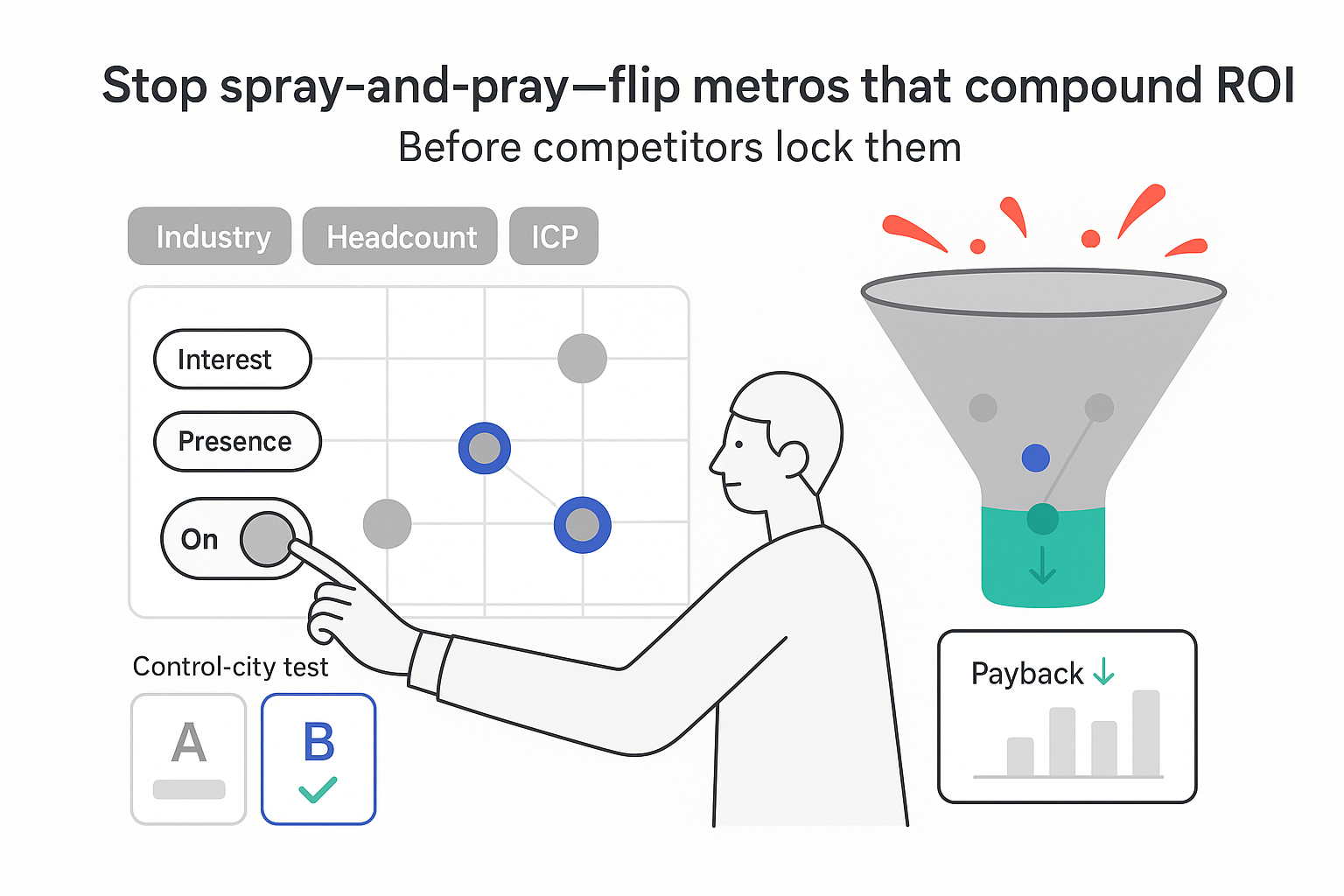

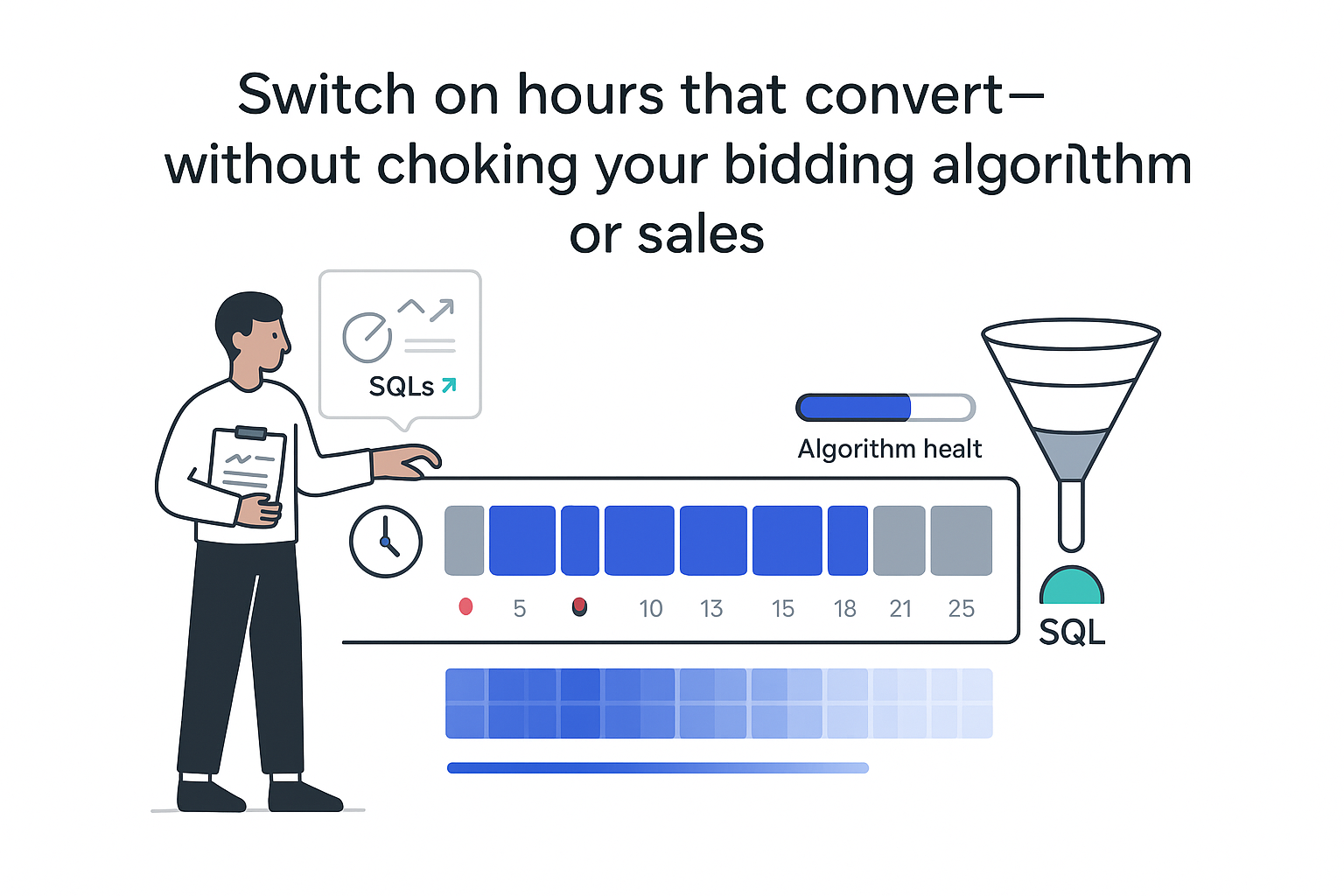
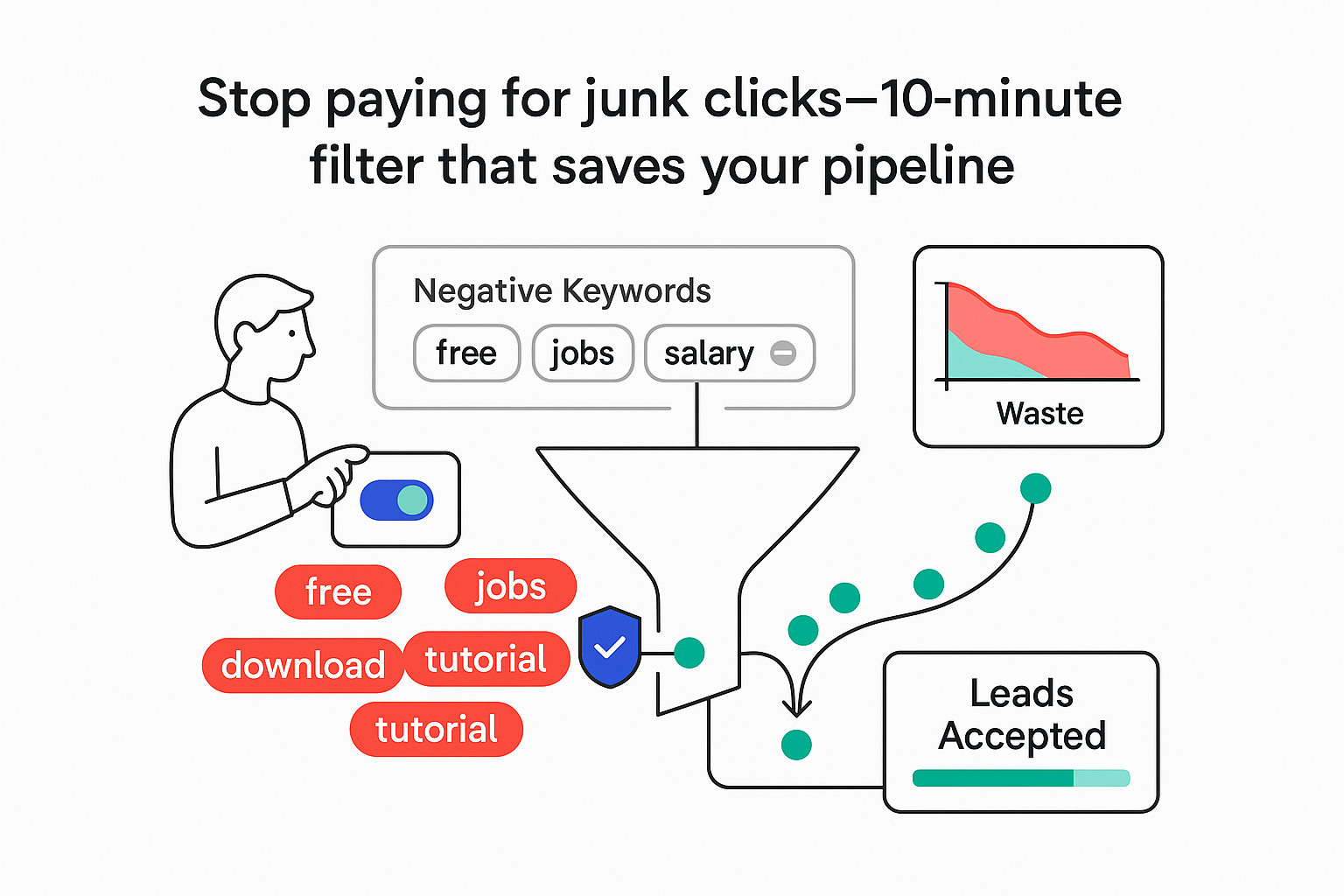
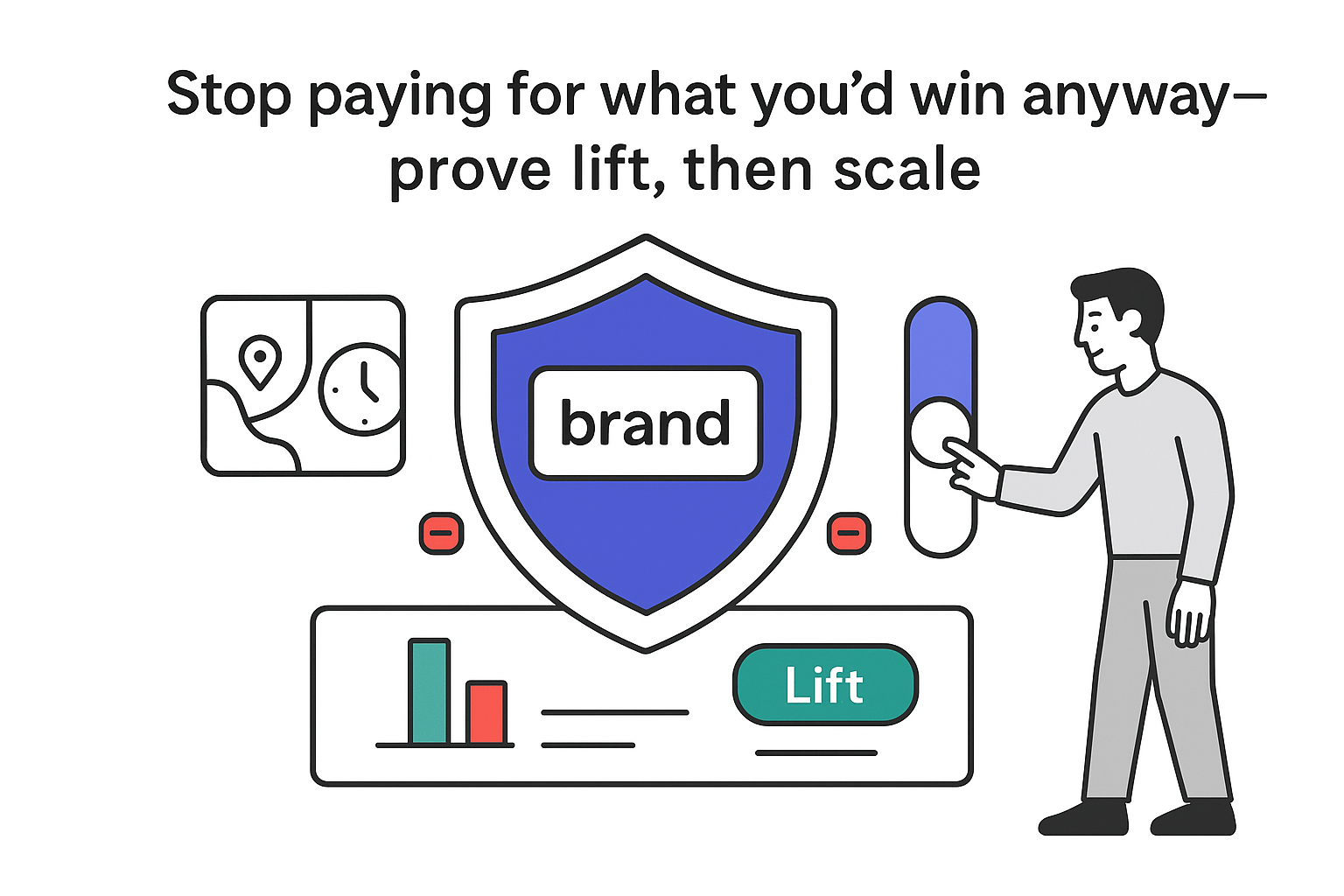
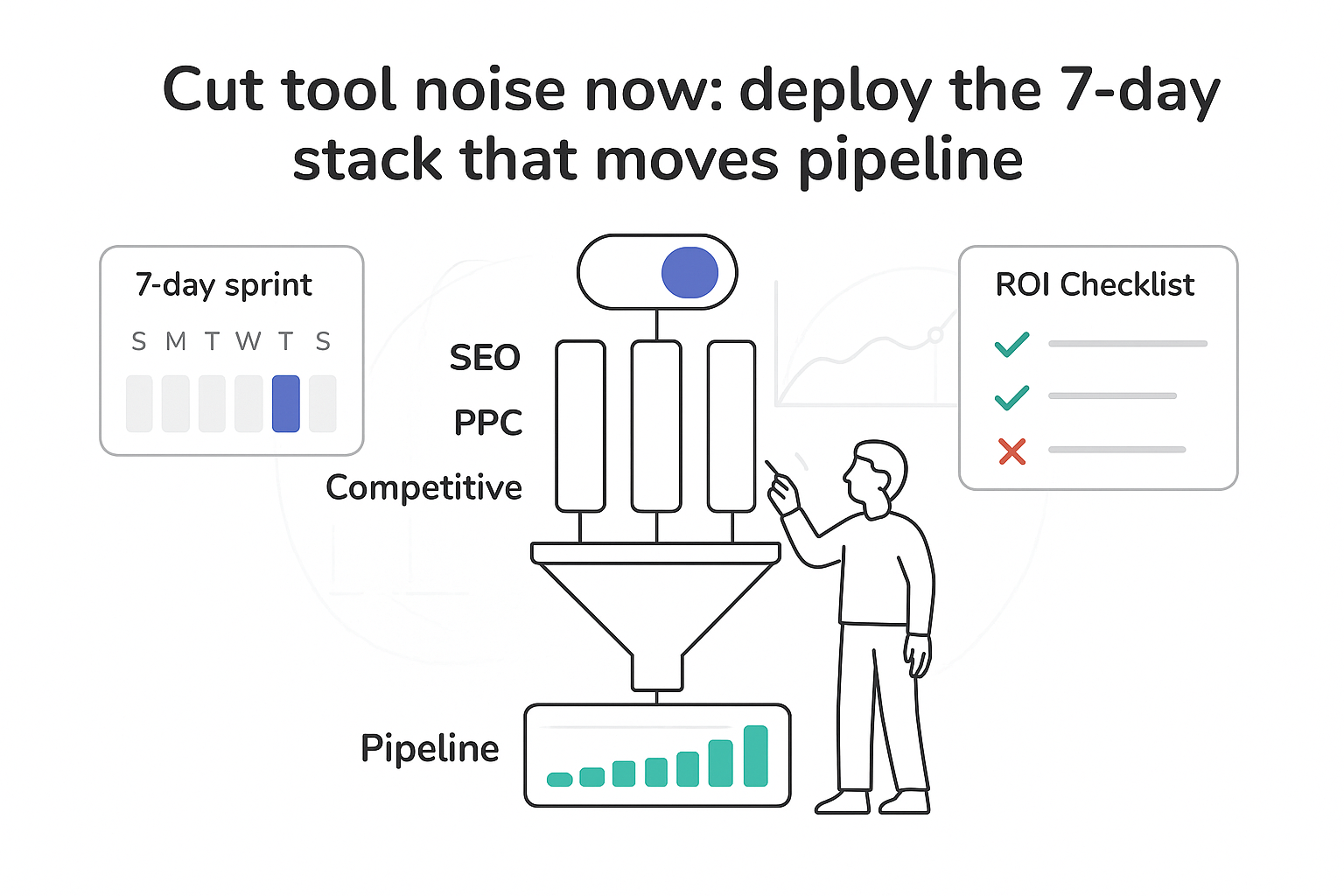
.svg)